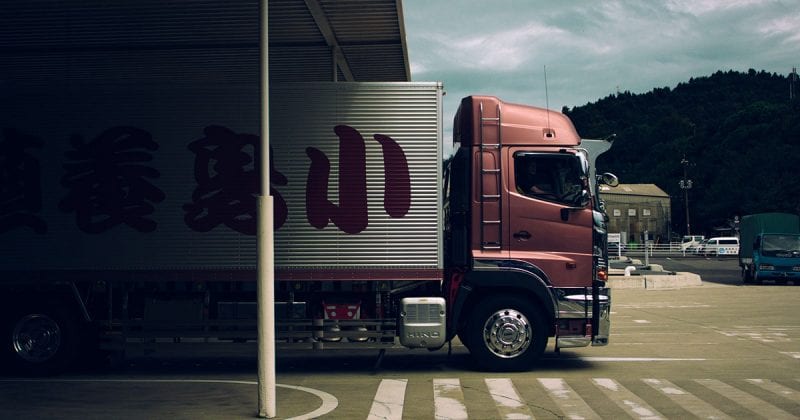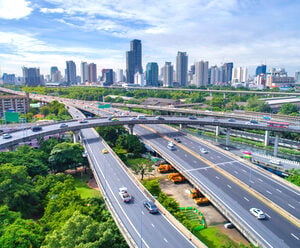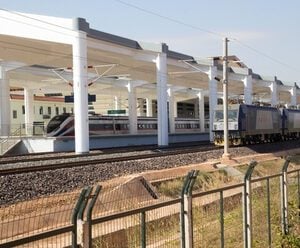
Why transport infrastructure is the AEC’s lifeblood

Key takeaways
- The ASEAN Economic Community needs to bring its roads to a consistent level of quality and compliance to reach its full potential
- Policymakers should focus on investing in streamlined logistics routes, not just roads or ports in isolation
- Other trade initiatives – like Belt and Road – may help governments gain leverage to better fund improvements to their roads and customs regimes
For the ASEAN Economic Community (AEC) to reach its full potential, its members must harmonize their transport infrastructure according to reliable, consistent standards. The AEC’s success depends on the fast and fluid movement of goods between member states’ economies, something which the region’s current transport infrastructure cannot provide on a comprehensive scale. ASEAN governments and private-sector investors must collaborate closely to inject capital into and develop transport networks which connect all parts of the region – not just those with the highest rates of GDP growth.
With the advent of the AEC, existing transport infrastructure will experience significant growth in the volume and velocity of traffic. Total trade in the region is expected to more than double by 2023 compared to 2013 levels, hitting nearly US$5.7 billion – putting significantly higher pressure on transport and logistics networks connecting member states to major trading partners (like China and India) and one another. And the benefits of improving cross-border transport networks are substantial: a 20% increase in import/export clearance speed could increase the region’s cumulative GDP by more than 600%. The AEC’s transport networks function as the community’s economic arteries: ensuring a smooth flow of goods will allow it to healthily grow.
Doing so will require the AEC to take concerted action to tackle the significant disparity in the region’s transport infrastructure. Some countries, like Singapore and Thailand, enjoy high levels of investment and performance across roads, railroads, ports, and airports; others, like Myanmar and Laos, struggle with unreliable infrastructure quality, a lack of skilled manpower, and even inconsistent electricity supplies. Even the region’s fastest-growing economies, like Vietnam and Indonesia, face potential roadblocks to future growth if they cannot scale up the capacity and efficiency of their transport networks.
How can the AEC bypass and remove the clots in its transport infrastructure? Greater volume of investment is not necessarily the answer: Vietnam and Indonesia alone are set to receive around than US$24 billion in port investment between now and 2023. Instead, policymakers and industry must work together in three main areas:
1. Streamline cross-border procedures
The performance of transport infrastructure depends on more than just physical buildings: improving customs clearance and logistics competencies alone, for example, could boost intra-ASEAN trade by 15%. Improving these procedures is particularly valuable because it benefits most the economies where infrastructure performance is poorest: Cambodia and Laos, for example, stand to gain the most in terms of GDP growth if the AEC can speed up clearance of imports and exports. Policymakers must prioritize implementing initiatives like the ASEAN Customs Transit System, which promises to harmonize customs procedures between all AEC members; logistics and transport firms can focus on improving current customs handling procedures to speed up the flow of goods for businesses in the here and now.
2. Invest in routes, not just roads
Industry leaders should invest more strategically in the AEC’s transport infrastructure – not simply in individual ports or railroads, but to develop streamlined routes that connect growth hubs to one another. The DHL AsiaConnect network, for example, connects major cities in Vietnam, Thailand, Singapore, Malaysia, and China via a series of road freight services, each of which allows goods to pass across national borders with minimal customs or trans-loading time. Investments like the AsiaConnect network not only raise the quality of physical transport infrastructure, but focus on delivering fully-integrated routes and services that give businesses and economies what they need from the AEC: faster, more reliable cross-border connectivity.
"Industry leaders should invest more strategically in the AEC’s transport infrastructure – not simply in individual ports or railroads, but to develop streamlined routes that connect growth hubs to one another."

3. Leverage global trade winds.
ASEAN members must not discount their value to other trade initiatives in the region when seeking foreign investment. Vietnam, for example, holds a pivotal location as a hub to the rest of the Greater Mekong Subregion, a position that makes it especially crucial to the development of China’s US$6 trillion “Belt and Road” initiative. Other high-growth countries in that area, like Laos and Cambodia, have become increasingly attractive as low-cost manufacturing hubs for Chinese businesses as China’s labor costs increase. Ultimately, the AEC offers huge potential for investors far beyond its member states – something that those in the region can and should tap into wherever possible.
The AEC’s success depends on its ability to improve connectivity between all ASEAN states. Improved road freight infrastructure not only allows for greater trade and growth throughout the Community, but also unifies its members to collectively gain more from larger economic forces, like the Belt and Road, in the broader Asia Pacific region. The speed bumps ahead will be much easier to manage if both public and private sectors from all of ASEAN are already on board.
A version of this article was previously published in the Vietnam Investment Review.
ALSO WORTH READING












 English
English